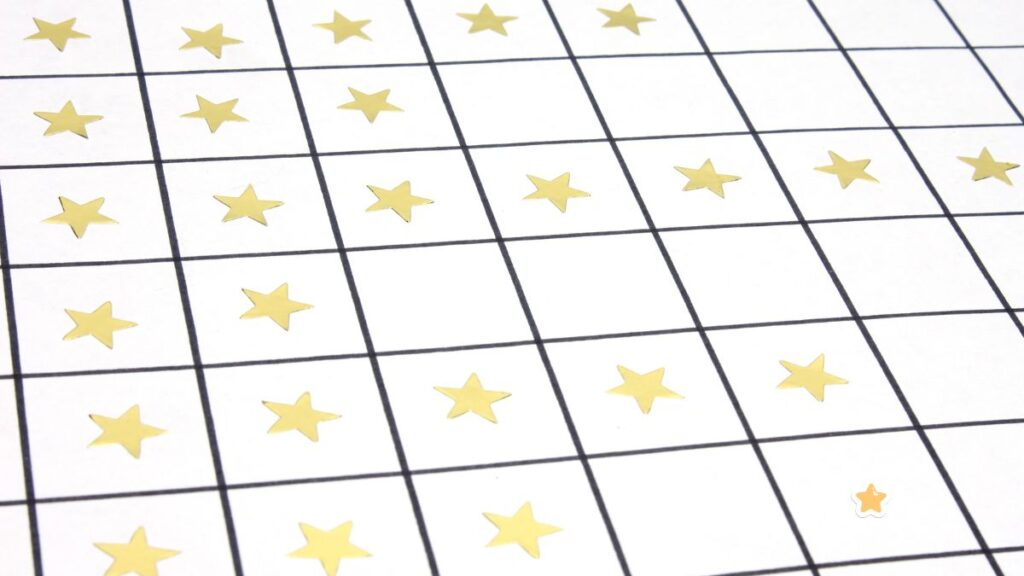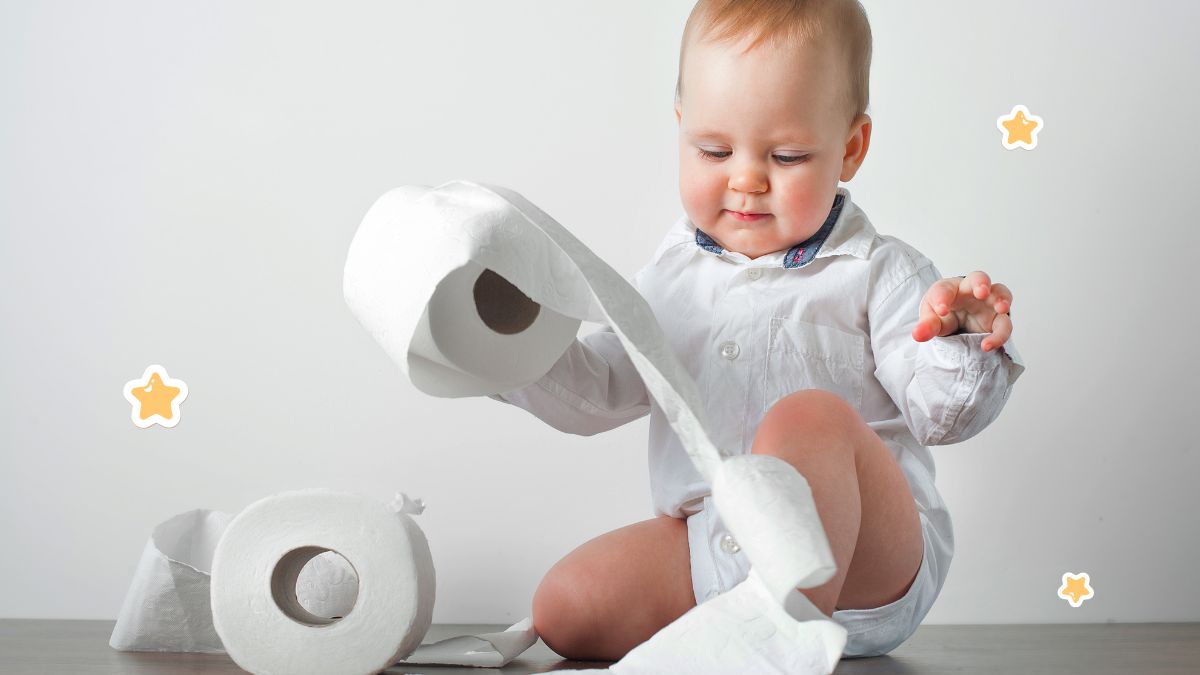We give you the basics for toilet training, including the when and how, as well as some reward suggestions to keep them motivated.
The thought of toilet training your child may seem daunting. Yes, there will be mess. You may even have difficulty communicating with your child where and when to wee. Rest assured however, the light bulb will go off in your little one’s head one day. They’ll be sitting on the toilet or potty and realise what you’ve been trying to get them to do for the last little while.
Eventually, you’ll forget all about the potty training days. That is until their 18th birthday party when you bring out the embarrassing stories.
Right now, it’s time to be prepared, patient and have a few potties on hand.
When to start toilet training
The best time to start potty training varies for each child, but many parents begin noticing signs of readiness around 18 months to two years old.
Toilet training is a significant milestone in your child’s development. It marks a big step towards independence. Guiding your toddler through this potty-training process can be both challenging and rewarding.
Look for these indicators that your child might be ready:
- Showing interest: Your child starts to show interest in the toilet, imitating others or talking about the potty.
- Staying dry: It’s a positive sign if your toddler stays dry for at least two hours during the day or after daytime sleeps.
- Regular bowel movements: This means predictable bowel movements at regular times.
- Communication: The ability to communicate the need to go to the toilet.
- Physical ability: The ability to pull down training pants or big-kid underwear.
Preparing for potty training
It’s best to be as consistent as you can when preparing your child and yourself for potty training. Some parents find it helpful to block out a few days to stay at home with the child to focus on toilet training.
There are going to be days when you simply can’t be consistent and that’s OK. But the ideal is to have a routine to ensure your child gets a clear message about why they’re being randomly put on the loo every so often.
If you start for two weeks and then give up, it could be confusing for them or they could lose the progress they’ve already made. However, if you have started and you’ve discovered your child isn’t quite ready yet, it’s totally fine to leave it for a later date.
Here are some things to consider to help you get prepared.
1. Choose the right equipment
Toilets are scary for kids. They’re high up with a big hole and loud flushing water. When you have a little bottom with the risk of falling down into that big hole, you won’t want to sit on that thing either.
Get rid of the big toilet seat and get a kid-friendly toilet seat that has a smaller hole. If possible choose one with a nice bright colour so it looks comfortable and safe. Include a step stool to help your child climb onto the toilet. It lets them rest their feet while sitting on the toilet too. Otherwise, they may feel like they’re going to fall inside that scary toilet.
2. Create a toilet area
Set up a designated toilet area that is easily accessible. If the toilet is a long way down the hall, it’s going to be difficult to get there at a moment’s notice.
If that’s all you have however, and to avoid your child feeling guilty because they didn’t make it, set up another little toilet area closer. Include a potty and some disposable paper on the flooring. That way there’s no mad rush to the toilet.
3. Establish a routine
At the beginning, you may need to set a timer to remind you to take your child to the toilet every 15 minutes (you will need to trial and error the time). Once they’ve gotten the hang of things, continue to take them to the toilet at regular intervals, such as after meals and before bedtime.
If you’re going on a long trip, stop regularly at public toilets or bring their potty from home along for familiarity. You’re training their bladder and mind to notice cues of needing to go.
4. Use training pants
You can choose to start with disposable training pants that can be easily managed before transitioning to underwear with elastic waistbands. Training pants are designed to be a step up from nappies and on the way to big-kid underwear. Your child can pull them up or down, and they’re designed to hold larger volumes of liquid. This is optional as some kids can go directly from nappies to underwear.
The potty-training process
Take a deep breath and remember nobody gets it right the first time. (Nobody needs that kind of expectation, whether they’re three or 30.) Your child won’t get it right the first time and maybe not even the 500th time. That’s OK.
They will get it sooner or later but you have to prepare yourself that this is going to take time. Maybe even months. You’re not a bad mum because your child hasn’t learnt it yet. It’s part of a child’s development and growth and they will get it when they get it.
Here are some tips to get started.
- Simple instructions: Use simple instructions and demonstrate how to use the potty or toilet. Encourage your child to sit on the potty for a few minutes at certain times, even if they don’t need to go.
- Be patient: Expect accidents; they are a natural part of learning this new skill.
- Consistency is key: Consistency helps young children understand what is expected. Ensure all caregivers follow the same routines and rules. If your child goes to childcare, talk to the educators about your potty training routine so they can be on board too.
- Positive reinforcement: Praise your child for their efforts and successes. If you prefer, you can set up a reward system. It can help your child understand they are doing something good when they go to the toilet.
Reward ideas for potty training success

Rewards can be a powerful motivator in the potty-training journey. Everyone loves rewards, especially when you’re two years old. When rewarding children, don’t go to the extreme of making them feel like they’ve let you down when they make a mistake. More importantly, don’t punish them for forgetting or having an accident.
Here are some creative and effective reward ideas:
1. Stickers and charts
Create a sticker chart where your child can add a sticker each time they use the potty successfully. (This is more suitable for two year olds and above.)
2. Small treats
Offer small treats like a piece of fruit or a favourite snack. (After washing hands of course.)
3. Extra playtime
Give your child extra playtime or a special activity as a reward. (Again, good for older toddlers who can understand the reward.)
4. Books and toys
Use books about potty training or a small toy as a reward.
5. Verbal praise
Don’t overlook simply telling them how proud you are. Verbal praise, clapping and even hugs can all be very encouraging.
6. Musical component
Kids love to press buttons or ring bells—anything to do with music. Integrate music into the routine where every time they get it right, they get to play the “toilet drum” or ring the “toilet bell” to signify achievement. (Better for two year olds and above.)
Night-time toilet training
While your child may show signs of readiness for toilet training during the day—and may even be managing their own toileting—night-time training is a different kettle of fish. Children need to develop the anti-diuretic hormone (ADH) first to stay dry overnight. ADH helps to concentrate urine overnight and usually develops when they’re around five years old (or older).
Overcoming challenges
Every child’s life includes unique challenges during the potty-training process. Some children will resist potty training, refusing to try the “new” thing.
There will be lots and lots of accidents and you’ll need a lot of household cleaners on hand. You’ll go through hundreds of training pants, underwear and bed sheets. But try to keep it simple and focus on one step at a time. Start with getting it right a few hours a day.
Toilet training is a big change in your child’s life and it requires patience, consistency and encouragement from parents. Recognising the signs of readiness, establishing a routine and using positive reinforcement can make this big step smoother for both you and your child.
Remember, every child learns at their own pace, so celebrate each success along the way. By approaching potty training with understanding and support, you’ll help your child gain confidence in this new skill, paving the way for a successful and independent future.
Read next
- Constipated toddler: Pear juice, fibre and other ways to help your child
- Why baby teeth are important
- What to do when my child is out-of-control
- Bedwetting causes & solutions
How helpful was this article?
Click on a star to rate it!
0 / 5. 0
Be the first to rate this post!
Adriana Wales
Related posts
Subscribe
Receive personalised articles from experts and wellness inspiration weekly!


